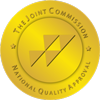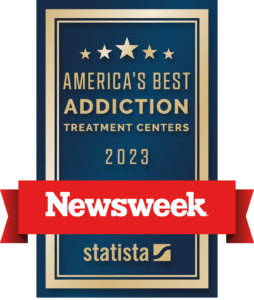Amphetamines and methamphetamines are powerful stimulants that rock the user’s brain into a fast-paced frenzy. The clarity and euphoria recognized in these drugs are what lead to dependence. Stimulants are more common than you think, especially in a retail space. Coffee is the most popular stimulant on the market, filling shops and cafes globally. If you have been diagnosed with ADHD, chances are you have been prescribed Adderall or Ritalin. Crystal meth and cocaine are some of the harsher stimulants, often leading to long-term health problems. The difference between amphetamine and methamphetamine is how quickly each of them reacts in the brain.
Amphetamine vs Methamphetamine: Why Are They Different?
Amphetamines are short-acting stimulant drugs that work to increase wakefulness in the user. These drugs originated in the 1930s as an over-the-counter drug called Benzedrine in the form of an inhaler to combat congestion. Soon after, pill tablets became widely available and the expansion grew from there. It should be noted that the effects of these stimulant drugs are pretty similar to those of crack or cocaine. If these stimulants are abused to the degree of overdose, the user will experience symptoms such as hallucinations, convulsions, and even death.
If you intake an amphetamine, you’ll likely experience:
- Increased blood pressure
- Decreased appetite
- Insomnia
- Exhaustion
Methamphetamines are more harmful than amphetamines due to how quickly these drugs enter the brain. In addition, methamphetamines have been linked to tooth decay. Methamphetamines hijack the central nervous system to produce waves of euphoria, aggression, and increased body temperature. These usually appear in rock or powder form, often taking a bluish or off-white color. Methamphetamines can be snorted for a longer, slow-acting high that lasts for up to a day. Smoking usually produces a short but intense high.
What Are the Similarities Between Amphetamines and Methamphetamines?
Amphetamines and methamphetamine share many similarities; think of them as chemical cousins. When comparing amphetamine vs methamphetamine, both have a high risk of addiction but offer medical use applications. They produce many of the same side effects; however, meth is more potent and fast-acting in the body. Both are Schedule II drugs, but methamphetamines are the most commonly trafficked substance in the United States.
Methamphetamines are the primarily manufactured stimulant by Mexican drug traffickers throughout the U.S., usually made from separate chemical elements imported from Mexico. Both have similar chemical structures, but meth has an additional grouping called “methyl” (containing one carbon atom and three hydrogen atoms). Street methamphetamines will often have impure additives to compensate for the medically prescribed versions.
Methylphenidate is a variation of amphetamine typically used for narcolepsy and ADHD. This is effective in treating restless children and to treat impulsive adults with concentration issues. Methylphenidate can produce common side effects of stimulants such as increased heart rate, chest pains, and fever. Chances are the body has to adjust to the medication but each case is different.
How Are Amphetamines Addictive?
In a 2019 report, with 68 million reported users, amphetamines and other stimulant drugs come second in rank of illicit drugs that are abused. Amphetamine dependence could produce symptoms of depression, anxiety, and psychosis. Individuals who experience withdrawals from amphetamines can expect:
- Fatigue
- Recurring Vivid Dreams
- Increased Appetite
- Motor Impairment
- Mood Swings
Medications such as Adderall can be highly addictive if taken beyond the prescribed use. Adderall produces a strengthened sense of concentration, usually given at 5 to 30mg. The cravings for amphetamines can begin shortly after use has stopped. Adderall can produce a euphoric feeling that is enhanced by the dosage. The side effects of Adderall include irregular heartbeat, increased blood pressure, and acute psychosis.
Adderall can be addictive due to the increased sense of concentration it provides as well. It’s often described as a “study drug” that unprescribed students use to improve academic performance through motivation and study for longer hours. People under the supervision of a physician are still likely to develop an addiction after long-term use. Some of the common side effects of Adderall abuse can include fatigue, dizziness, weight loss, and decline in personal hygiene. Adderall is commonly combined with alcohol, but it can cause alcohol poisoning due to the delay in alcoholic side effects.
How Are Methamphetamines Addictive?
Methamphetamines have a relatively short half-life of about seven to 10 hours but can last up to 24 hours depending on the dose. These are commonly smoked through a glass pipe or injected. Methamphetamines can remain in the body unchanged by the body’s metabolism for long periods. The cravings for methamphetamine are known to be strong but subside rapidly.
Individuals struggling with methamphetamine withdrawals can experience:
- Fatigue and lethargy
- Increased appetite
- Suicidal thoughts
- Depression and anxiety
- Paranoia, hallucinations
The depressive symptoms of methamphetamine withdrawals are what make the stimulant very gripping. The greater the cravings for methamphetamines, the higher likelihood of relapse from depressive symptoms. Those with pre-existing mental health issues or are older have a greater chance of developing psychosis. The withdrawal symptoms of methamphetamines are fairly consistent but are not as severe as alcohol or opioid withdrawals.
The comedown effects from methamphetamine use cause the user to binge, which can lead to overdose. The feelings of hopelessness and fatigue often push the user to “tweak” but this only causes the user to experience more intense symptoms. Tweaking can prolong sleeplessness for three to five days, with the euphoria fading while paranoia and psychosis begin to creep up.
What are Stimulants, and How Do They Relate to These Drugs?
Stimulants are drugs that essentially speed up the processes of the body, mainly the central nervous system. Say you work long hours and keep finding yourself dozing off in the middle of important tasks. A friend recommends some pills that keep you up, but your teeth-grinding seizes you. Do you wonder what’s changing you?
Stimulants are more likely to increase health risks when paired with other substances. This is also known as polydrug use. Stimulants can come in a variety of forms, from pills to powders. Stimulant overdoses typically lead to heart failure or seizures, so it’s vital that first responders provide proper care and blood flow to the patient.
Some common stimulant drugs and street names include:
- Coke or Crack
- Nicotine
- Caffeine
- Study Drugs
- Khat
- Speed
- Crystal
- Uppers
Low doses of stimulant drugs offer the wakefulness of espresso or drag from a cigarette. Stimulant drugs can be snorted, injected, and smoked. Just like any drug, the body can develop a tolerance to these stimulant drugs — with the need for higher dosages. Psychological dependence can be easier to manage in comparison to the demands of physical dependence; where the body needs the stimulant to function.
Side Effects of Stimulant Use
Taking in large amounts of stimulants drugs have posed side effects such as:
- Tremors
- Dizziness
- Nausea
- Chest Pain
- Sweating
- Abdominal Cramps
- Headache
The abuse of stimulant drugs can lead to permanent damage to the brain, often leading to psychosis, aggression, and suicidal/homicidal behaviors. Amphetamines are typically prescribed in the form of pills for ADHD and narcolepsy. Stimulant drugs can appear as over-the-counter medication like pseudoephedrine (used in cold and allergy medicine). These drugs have to be logged and buyers usually require identification. According to the DEA, methamphetamines are Schedule II drugs, with only one version for prescribed use (Dexosyn for specific ADHD and obesity cases).
Stimulants increase the release of dopamine and norepinephrine, chemical messengers in the brain that revolve around the reward center. Individuals who use stimulant drugs can experience:
- Euphoria
- Increased Confidence or Self Esteem
- Rapid Heartbeat
- Reduced Appetite
- Weight Changes
- Dehydration
- Anxiety
- Mental Sharpness
- Sexual Arousal
What Does Detox Look Like for Amphetamine vs Methamphetamine?
Detox for amphetamines vs methamphetamines has a straightforward forward process. Symptoms can begin within 24 hours after use has stopped. Since the physical withdrawal symptoms are not as severe compared to other stimulants and substances, the patient can expect the symptoms to persist for about seven to 10 days. The first wave of withdrawals usually takes place within the first few days. After an approximate two-week mark, the cravings will subside for the most part.
For long-term recovery, members should explore an inpatient drug rehab in Kansas City as an option. Behavioral therapies and group support will ignite the recommended care and attention the patient needs. Cognitive behavioral therapy or CBT is a comprehensive approach to tackle the compulsions that enable addiction. Developing proper coping skills and life strategies are what will distinguish the healing process. Journaling could be beneficial to express your feelings and experiences.
There are no FDA-approved medications to treat methamphetamine withdrawals, although antidepressants like Wellbutrin have shown promising results to reduce cravings. Physicians are free to prescribe any variety of medications to treat the withdrawal symptoms of stimulants like these. They can administer antidepressants, but the effects take longer to kick in, so it’s not always the best option for recovery.
Seek Care Through Sana Lake
The critical effects of methamphetamines and amphetamines should not be the barrier between you and your recovery. Sana Lake is here in open arms to provide quality care and understanding for you or the needs of your loved one. We tailor recovery for every nuanced patient with their journeys. If you or a loved one are struggling with addiction, feel free to contact us. Our mission is to listen.
References:
https://www.dea.gov/taxonomy/term/346
https://adf.org.au/drug-facts/stimulants/
https://www.ncbi.nlm.nih.gov/pmc/articles/PMC7125061/
https://www.dea.gov/sites/default/files/2020-06/Amphetamines-2020_0.pdf
https://www.dea.gov/sites/default/files/2020-06/Stimulants-2020.pdf
https://www.dea.gov/sites/default/files/2020-06/Methamphetamine-2020_0.pdf



